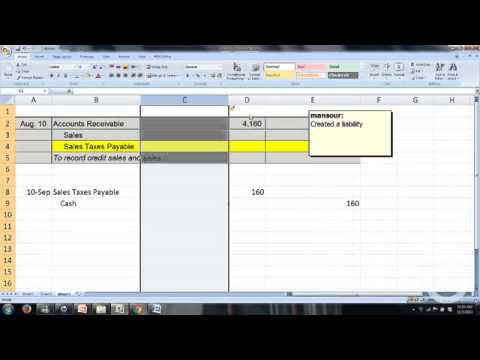
This bookkeeping method also complies with the US generally accepted accounting principles (GAAP), the official practice and rules for double-entry accounting. To account for the credit purchase, entries must be made in their respective accounting ledgers. Because the business has accumulated more assets, a debit to the asset account for the cost of the purchase ($250,000) will be made.
- Regular reviews, validation checks, and training can minimize data entry errors.
- This accounting system also allows you to track business finances more effectively, and make better decisions about where to allocate your resources.
- There are recorded instances of double-entry bookkeeping from as far back as 70 A.D.
Debits and credits
Also, an entry for the same amount is made on the credit side of the Cash In Hand Account because cash is an asset and is decreasing. An entry of $500 is made on the debit side of the Capital Account because the owner’s capital in the business has been reduced. For example, consider how to reconcile total manufacturing cost with total cost of goods the entries resulting from an approved expense claim. The amounts are large, so perhaps the expenses were incurred by a senior manager or just possibly a journalist. This is a fundamental and implicit consequence of the double-entry system of accounting, and there are no exceptions.
You invested $15,000 of your personal money to start your catering business. When you deposit $15,000 into your checking account, your cash increases by $15,000, and your equity increases by $15,000. When you receive the money, your cash increases by $9,500, and your loan liability increases by $9,500. When you make the payment, your account bookkeeping articles payable decreases by $780, and your cash decreases by $780.

Sub-Accounts and Subcategories – The Chart of Accounts: Organizing Accounts for Double-Entry Bookkeeping
It enables businesses to match transactions, track cash flow, and maintain accurate records. Financial management systems, such as Enterprise Resource Planning (ERP) software, integrate various business functions, including accounting and finance. These systems provide a comprehensive platform for managing financial transactions, recording journal entries, and generating financial statements. They offer advanced features for analyzing data, managing budgets, and generating reports. The likelihood of administrative errors increases when a company expands, and its business transactions become increasingly complex. While double-entry bookkeeping does not eliminate all errors, it is effective in limiting errors on balance sheets and other financial statements because it requires debits and credits to balance.
Detection and Prevention of Errors and Fraud – Why is Double-Entry Bookkeeping Important for Businesses?
This enhances transparency, instills confidence, and streamlines the company’s financial position and operations assessment. In business finance, there exists a powerful tool that enables accurate recording, analysis, and interpretation of financial transactions. Its name may sound complex, but its principles form the bedrock of modern accounting practices. Welcome to the world of double-entry bookkeeping—a system designed to demystify the intricacies of financial management.
For instance, if a business takes a loan from a financial entity like a bank, the borrowed money will raise the company’s assets and the loan liability will also rise by an equivalent amount. Double-entry bookkeeping provides a solid foundation for financial analysis, decision-making, and compliance with regulatory requirements. It offers numerous benefits, such as error detection, comprehensive recording of transactions, and transparency in financial reporting. Consider conducting periodic internal and external audits to assess the accuracy and effectiveness of the double-entry bookkeeping system. Internal audits help identify weaknesses and ensure compliance, while external audits independently assess your financial records. At the end of the accounting period, close the temporary accounts (revenue and expense accounts) to the retained earnings account.
Debits are increases to an account, and credits are decreases to an account. Double-entry accounting is a system where each transaction is recorded in at least two accounts. This method provides a more complete picture of a business’s finances, and is typically used by larger businesses. Single-entry accounting is a system where transactions are only recorded once, either as a debit or credit in a single account.
Additionally, double-entry bookkeeping aids in audit and compliance processes. The transparent and auditable nature of financial records simplifies internal and external auditing procedures, ensuring the accuracy and validity of financial information. Moreover, adhering to double-entry bookkeeping principles helps businesses meet regulatory requirements and accounting standards, enhancing their compliance efforts.
So, if assets increase, liabilities must also increase so that both sides of the equation balance. Accounting software has become advanced and can make bookkeeping and accounting processes much easier. The software can reconcile data from different accounts and automate accounting processes.
Small businesses with more than one employee or looking to apply for a loan should use double-entry accounting. This system is a more accurate and complete way to keep track of the company’s financial health and how fast it’s growing. This equation means that the total value of a company’s assets must equal the sum of its liabilities and equity. In other words, if a company has $100 in assets and $50 in liabilities, then its equity must be $50. If a github company has $100 in assets and $110 in liabilities, then its equity would be -$10.

